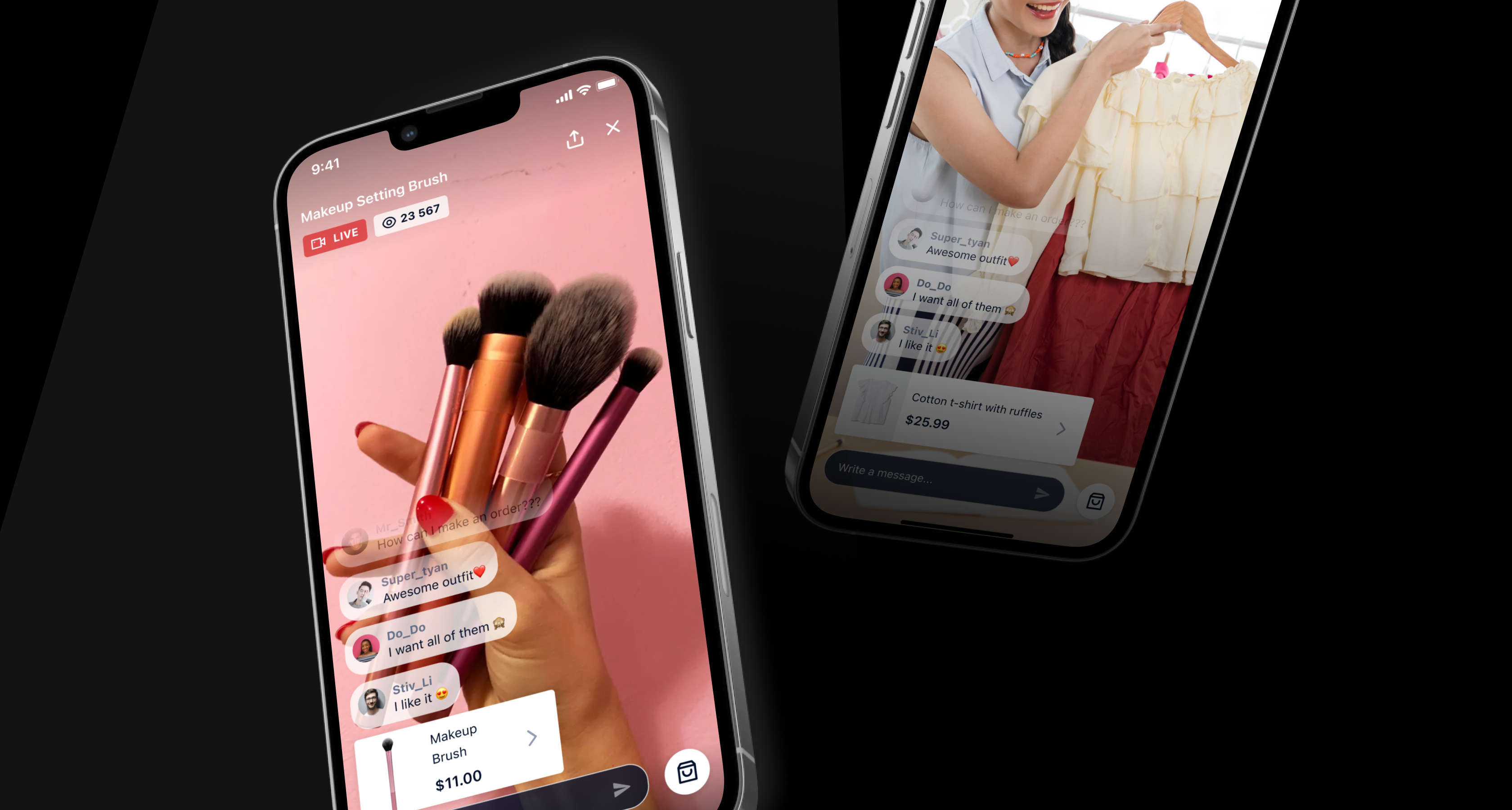Piece written by Dmytro Yeremenko, Business Analyst at JMIND. who has spent 1.5 years with the company, along with 9 years of previous research and advisory experience in the Big4.
How often do you return online orders? NRF states that around 17% of total $4.583 trillion US retail sales were returned in 2021 – and almost 21% for eCommerce. The automotive (19% of all returns), clothing & apparel (12%), home improvement, and housewares (11% each) industries suffer the most. In fashion, for example, almost 72% of all returns are preference-based – mostly it is the wrong size, color, style, or fit. Another 10% are caused by defects or description inconsistencies. What if there is a new sales channel to efficiently handle most of such cases?
Live commerce – a combination of livestreaming and eCommerce – is a young interactive online sales format originating from China. It offers customers the ability to buy goods or services while watching live videos. During a typical shoppable stream hosts demonstrate a selection of products for sale. Viewers may ask questions in the live chat, communicate with others, and easily buy items without leaving the stream.

This Asian phenomenon is now becoming a major international digital retail trend. First launched in 2016, live commerce in China is expected to generate more than $620 billion by 2023 according to eMarketer. Europe and the US are steadily tagging along. The Influencer Marketing Factory states that 57% of US customers have already bought merchandise live, and the respective 2023 US sales are estimated at $25 billion. Forrester indicates that 59% of Europeans are interested in live commerce or have purchased through it, and Germany expects a corresponding €14 billion market in five years. McKinsey predicts that one in five eCommerce sales globally will be done via live shopping by 2026.
More from News
- Are AI Startups Investing In Teachers Learning AI A Good Move For Education?
- Can a Robot Really Perform Surgery Without Human Help?
- Reports Show Fewer Students Chasing Tech Careers, Here’s Why
- Undersea Cables And Digital Systems At Risk, MPs Warn
- Government Partners With Google Cloud To Modernise Tech, Here’s How
- What Is Jack Dorsey’s New App, BitChat?
- Students Are Sneaking Secret AI Phrases On Academic Papers
- How Will The Rise Of AI Influencers Impact Content Creators?
In contrast to traditional eCommerce, the format offers personalized in-store experiences online. During a shoppable livestream customers are able to see merchandise from different perspectives. They may also ask sellers about product details or similar items in the live chat – and get immediate answers. Moreover, viewers may communicate with others to get advice or exchange insights generating tons of social proof. In addition, influencers relevant to the target audience are often invited as hosts, and promo codes or special offers are commonly provided. As a result, live commerce may drive sales conversions up to 30% and reduce product returns up to 40%.
Operating a dedicated platform-native live commerce solution allows companies to fully control this new sales channel – i.e. user acquisition, engagement, and retention, as well as all related data. To help online retailers stay ahead of the curve, a Ukrainian team within JMIND, an IT product company, develops Infinite – its own SaaS live commerce solution. With Infinite companies can easily integrate interactive shoppable livestreams into their web and mobile selling platforms. Infinite’s web admin panel allows users to easily manage streams and monitor their performance. JMIND spent months working on the product before the war in Ukraine escalated. Now their plan is to proceed with the launch despite all challenges, maintain consistent quality, and develop new features.



